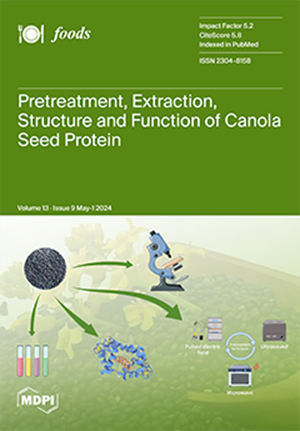Sensory Evaluation and Consumers’ Acceptance of a Low Glycemic and Gluten-Free Carob-Based Bakery Product
IF 4.7
2区 农林科学
Q1 FOOD SCIENCE & TECHNOLOGY
引用次数: 0
Abstract
Carob pulp flour has antidiabetic and antioxidant activities, is naturally sweet, and is rich in fibers. It is obtained from carob pod pulp from the evergreen tree Ceratonia siliqua L., which is grown in Mediterranean areas and is known for locust bean gum production. Despite its valuable effects on health, such as the modulation of the glycemic index, this ingredient has a tremendous impact on technological and hedonic features, mainly on color, flavor, and texture. In this paper, the qualitative features and consumers’ acceptance of a carob-based gluten-free bakery product where rice flour was substituted at 40% with carob pulp flour were studied. A panel group of experts described the bread as dark, quite dense, sweet, aromatic, and with a limited bubble dispersion. On the other hand, the sensory assessment and the willingness to pay of consumers were assessed in two groups (a fully informed one about heathy attributes of the food and a blind one). The results indicated a moderate appreciation of the overall quality of the product (average score between 4 and 5 points on a 9-point Likert scale). The information about the food’s healthy properties and the ability to maintain a low glycemic index did not enhance the consumers’ perception of the product, while previous knowledge and involvement in the product consumption were perceived to have primary importance regarding the final consumers’ choice. Finally, an accelerated shelf-life test was run on the packaged snack to evaluate the general quality and stability. The protective packaging helped in limiting bread decay and maintaining the textural characteristics.低血糖、无麸质角豆基烘焙产品的感官评估和消费者接受度
角豆树果肉粉具有抗糖尿病和抗氧化活性,天然甜味,富含纤维。它取自常绿树 Ceratonia siliqua L. 的角豆荚果肉,这种树生长在地中海地区,以生产槐豆胶而闻名。尽管角豆胶对健康有重要影响,如调节血糖指数,但这种成分对技术和享乐特征也有巨大影响,主要是颜色、风味和质地。本文研究了以角豆树果肉粉替代 40% 米粉的角豆树无筋面包的质量特征和消费者接受度。专家组认为这种面包颜色深、相当致密、甜、芳香、气泡分散有限。另一方面,在两个小组(一个是完全了解食品健康属性的小组,另一个是盲人小组)中对消费者的感官评估和支付意愿进行了评估。结果表明,消费者对产品的整体质量评价一般(李克特 9 分量表平均分为 4 至 5 分)。食品的健康特性和保持低血糖生成指数的能力等信息并没有增强消费者对产品的感知,而以往的知识和对产品消费的参与被认为对消费者的最终选择至关重要。最后,对包装零食进行了加速保质期测试,以评估其总体质量和稳定性。保护性包装有助于限制面包腐烂并保持其口感特征。
本文章由计算机程序翻译,如有差异,请以英文原文为准。
求助全文
约1分钟内获得全文
求助全文
来源期刊

Foods
Immunology and Microbiology-Microbiology
CiteScore
7.40
自引率
15.40%
发文量
3516
审稿时长
15.83 days
期刊介绍:
Foods (ISSN 2304-8158) is an international, peer-reviewed scientific open access journal which provides an advanced forum for studies related to all aspects of food research. It publishes reviews, regular research papers and short communications. Our aim is to encourage scientists, researchers, and other food professionals to publish their experimental and theoretical results in as much detail as possible or share their knowledge with as much readers unlimitedly as possible. There is no restriction on the length of the papers. The full experimental details must be provided so that the results can be reproduced. There are, in addition, unique features of this journal:
manuscripts regarding research proposals and research ideas will be particularly welcomed
electronic files or software regarding the full details of the calculation and experimental procedure, if unable to be published in a normal way, can be deposited as supplementary material
we also accept manuscripts communicating to a broader audience with regard to research projects financed with public funds
 求助内容:
求助内容: 应助结果提醒方式:
应助结果提醒方式:


